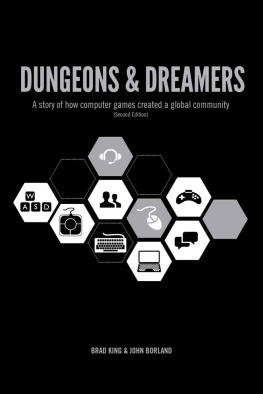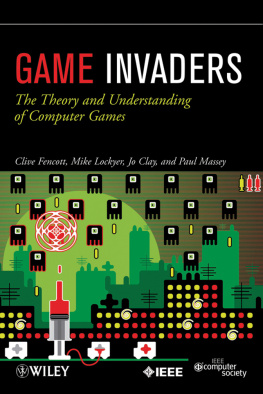CRITICAL GAMING: INTERACTIVE HISTORY AND VIRTUAL HERITAGE
Digital Research in the Arts and Humanities
Series Editors
Marilyn Deegan, Lorna Hughes, Andrew Prescott and Harold Short
Digital technologies are becoming increasingly important to arts and humanities research, expanding the horizons of research methods in all aspects of data capture, investigation, analysis, modelling, presentation and dissemination. This important series will cover a wide range of disciplines with each volume focusing on a particular area, identifying the ways in which technology impacts on specific subjects. The aim is to provide an authoritative reflection of the state of the art in the application of computing and technology. The series will be critical reading for experts in digital humanities and technology issues, and it will also be of wide interest to all scholars working in humanities and arts research.
Other titles in the series
Performing Digital
Multiple Perspectives on a Living Archive
Edited by David Carlin and Laurene Vaughan
ISBN 978 1 4724 2972 8
Crowdsourcing our Cultural Heritage
Edited by Mia Ridge
ISBN 978 1 4724 1022 1
Digital Archetypes
Adaptations of Early Temple Architecture in South and Southeast Asia
Sambit Datta and David Beynon
ISBN 978 1 4094 7064 9
Paradata and Transparency in Virtual Heritage
Edited by Anna Bentkowska-Kafel, Hugh Denard and Drew Baker
ISBN 978 0 7546 7583 9
Critical Gaming: Interactive History and Virtual Heritage
ERIK CHAMPION
Curtin University, Australia

First published 2015 by Ashgate Publishing
Published 2016 by Routledge
2 Park Square, Milton Park, Abingdon, Oxon OX14 4RN
711 Third Avenue, New York, NY 10017, USA
Routledge is an imprint of the Taylor & Francis Group, an informa business
Copyright Erik Champion 2015
Erik Champion has asserted his right under the Copyright, Designs and Patents Act, 1988, to be identified as the author of this work.
All rights reserved. No part of this book may be reprinted or reproduced or utilised in any form or by any electronic, mechanical, or other means, now known or hereafter invented, including photocopying and recording, or in any information storage or retrieval system, without permission in writing from the publishers.
Notice:
Product or corporate names may be trademarks or registered trademarks, and are used only for identification and explanation without intent to infringe.
British Library Cataloguing in Publication Data
A catalogue record for this book is available from the British Library
The Library of Congress has cataloged the printed edition as follows:
Champion, Erik.
Critical gaming : interactive history and virtual heritage / by Erik Champion.
pages cm. (Digital research in the arts and humanities)
Includes bibliographical references and index.
ISBN 978-1-4724-2290-3 (hardback) ISBN 978-1-3155-7498-1 (ebook) ISBN 978-1-3171-5738-0 (epub) 1. HumanitiesData processing. 2. HumanitiesInteractive media. 3. Computer gamesDesign. I. Title.
AZ105.C56 2015
001.30285dc23
2015004740
ISBN 9781472422903 (hbk)
ISBN 9781315574981 (ebk-PDF)
ISBN 9781317157380 (ebk-ePUB)
Contents
List of Figures
List of Abbreviations
|
|---|
AI | artificial intelligence |
AR | augmented reality |
BDI | Belief-Desire-Intention intelligent agents |
CRPG | computer role-playing game |
DH | digital humanities |
EEG | electroencephalography |
GSR | galvanic skin response |
HCI | humancomputer interaction |
HMD | head-mounted display |
NPC | non-playing character |
NQC | non-questing character |
VE | virtual environment |
VR | virtual reality |
Key Terms
Artificial intelligence (AI): The ability of a computer or other machine to perform those activities that are normally thought to require intelligence (http://www.thefreedictionary.com/artificial+intelligence).
Apophenia: the game-players perception of meaning, events or relationships in a computer game not intended by the game designer (after Tynan Sylvester).
BDI: Belief-desire-intentions agent, theory of AI research, particularly designed for AI agents that plan and execute plans. The BDI agent has beliefs about the world, itself and others. Desires motivate the agent. Intentions are what the agent has chosen to do.
Biofeedback: represents a real-time two-way feedback loop between the machine and the user. The user reacts to an action initiated by the system, and the system can then react based on the participants physical/emotional reaction (and so forth).
Causal mechanics: the game mechanics of a virtual world which appear to dictate cause and effect from the players perspective, or the designed mechanics which specifies cause and effect from the designers perspective.
Computer game: an engaging challenge that offers up the possibility of temporary or permanent tactical resolution without harmful outcomes to the real-world situation of the participant.
CRPG: a computer role-playing game.
Cultural presence: a visitors overall subjective impression when visiting a virtual environment that people with a different cultural perspective occupy or have occupied that virtual environment as a place. Such a definition suggests that cultural presence is not just a feeling of being there, but cultural presence is also a sense of being in a foreign time or not-so-well understood place.
Cultural significance: following the Burra Charter 2013 (Australia ICOMOS Incorporated): Cultural significance means aesthetic, historic, scientific, social or spiritual value for past, present or future generations. Cultural significance is embodied in the place itself, its fabric, setting, use, associations, meanings, records, related places and related objects.
Diegetic: the fictional world created by the game or film. For virtual environments designed for digital history and virtual heritage, the world is not necessarily fictional it could be counter-factual or accurate but it is still imagined or experienced based on the digital environment. Hence, an imagined world might be more appropriate than a fictional world.
Digital history: can be described as the visualization of historical resources using digital technology.
Game-based historical learning: the focused use of real-time rendering engines, game editors, game platforms, game peripherals and/or game-style interaction metaphors to help the public enhance their awareness of historical issues and heritage sites. Generally, the term implies that the virtual environment experience is best achieved by playing, but that what is learnt through such game-play is designed to be perceived as being culturally or scientifically significant and authentic. This technology may also help scientists communicate on, collaborate with each other or otherwise evaluate various hypotheses on the validity, construction, significance, use, maintenance or disappearance of historical and heritage-based sites, artefacts and cultural beliefs.
Next page

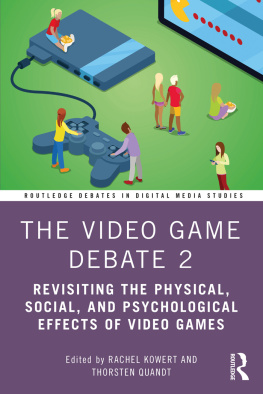
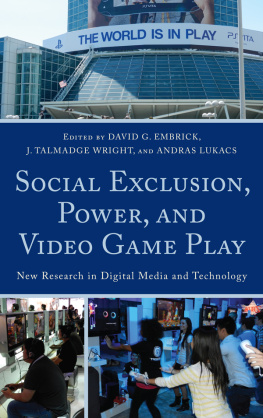

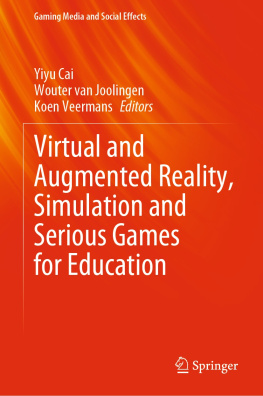
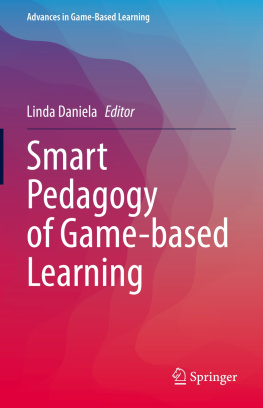
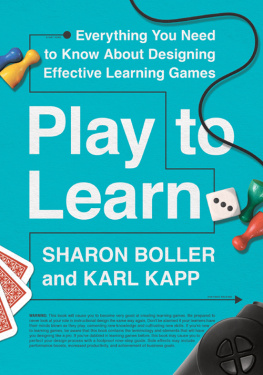
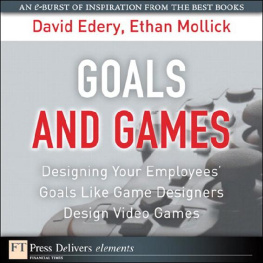
![Ethan Ham [Ethan Ham] - Tabletop Game Design for Video Game Designers](/uploads/posts/book/119417/thumbs/ethan-ham-ethan-ham-tabletop-game-design-for.jpg)

